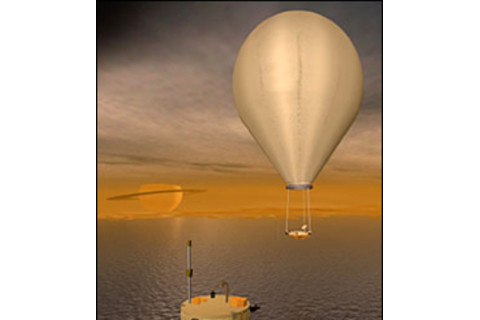
Which celestial bodies are more likely to host extraterrestrial life: Saturn's hazy moon Titan and water-spewing moon Enceladus, or Jupiter's icy moons Europa and Ganymede, which may have liquid oceans beneath their frozen crusts? That's the difficult question facing NASA and the European Space Agency (ESA) as they try to decide where to send the next planetary probe.
By the end of this month, agency officials plan to pick a destination for a massive mission, costing nearly US$4 billion, to be launched around 2020 for the distant reaches of the Solar System. The battle pits Titan, which recent discoveries have made the cool new kid on the block, against Jupiter's moon Europa, which has long sat atop community wish lists [Nature News].
In advance of that decision, the space agencies have released details of the dueling proposals. The potential Saturn mission
would follow up the remarkable discoveries made by the Nasa/Esa Cassini-Huygens mission which continues to operate at the ringed planet.... Cassini has sent back data that indicates Titan is akin to a primitive - albeit frozen - Earth. It has a thick atmosphere and is rich in organic (carbon-rich) molecules [BBC News].
The plan calls for an orbiter that would release a hot air balloon to drift in Titan's hazy atmosphere and would drop a lander to the surface, where it could float on one of moon's lakes of liquid ethane and methane. The orbiter would also dip into the atmosphere of Enceladus, which has fired imaginations with the revelation that it has geysers that spew jets of icy water into space. But the arguments for exploring Jupiter's moons are just as compelling.
In 1995, the Galileo probe began an 8-year tour of Jupiter's system, during which it snapped the first close-ups of Europa's scarred surface. Analysis of a magnetic anomaly soon revealed the moon's most astonishing feature: that eggshell of ice is thought to enclose a warm, salty ocean. Scientists immediately clamoured to return [Nature News].
Supporters of a mission to the Jovian moons say that an orbiter equipped with an ice-penetrating radar could settle the question of how thick Europa's icy shell is--and crucially, whether it's thick enough to shield primitive life forms from the punishing radiation coming from the sun and from Jupiter's magnetosphere. Scientists would also like to study the larger Jovian moon Ganymede because of its intriguing magnetic field. The radiation that a Europa orbiter would have to withstand may be a sticking point: NASA is developing technology to shield the orbiter's instruments, but it would be expensive.
The Europa orbiter must fit within a NASA cost envelope of $2.9 billion, while the ESA contribution, the Ganymede orbiter, must cost less than €650 million ($860 million). At those prices, a landing element, or even an ice-drilling cryobot, is impossible. But [NASA scientist Bob] Pappalardo argues that sending a Europa orbiter now could pave the way for a future lander — by scouting for the smooth pavement. "We're ready to go to Europa now," he says, "and we'll be ready to do Titan next" [Nature News].
Related Content: 80beats: New Evidence of Hospitable Conditions for Life on Saturn’s Moons 80beats: Geysers From Saturn’s Moon May Indicate Liquid Lakes, and a Chance for Life 80beats: Hydrocarbon Lake on Saturnian Moon May Be a Hotspot for Alien Life DISCOVER: Water World takes a look at Europa DISCOVER: Jupiter, Not Bust chronicles the Galileo probe's Jupiter observations in 1996 Image: NASA/ESA













